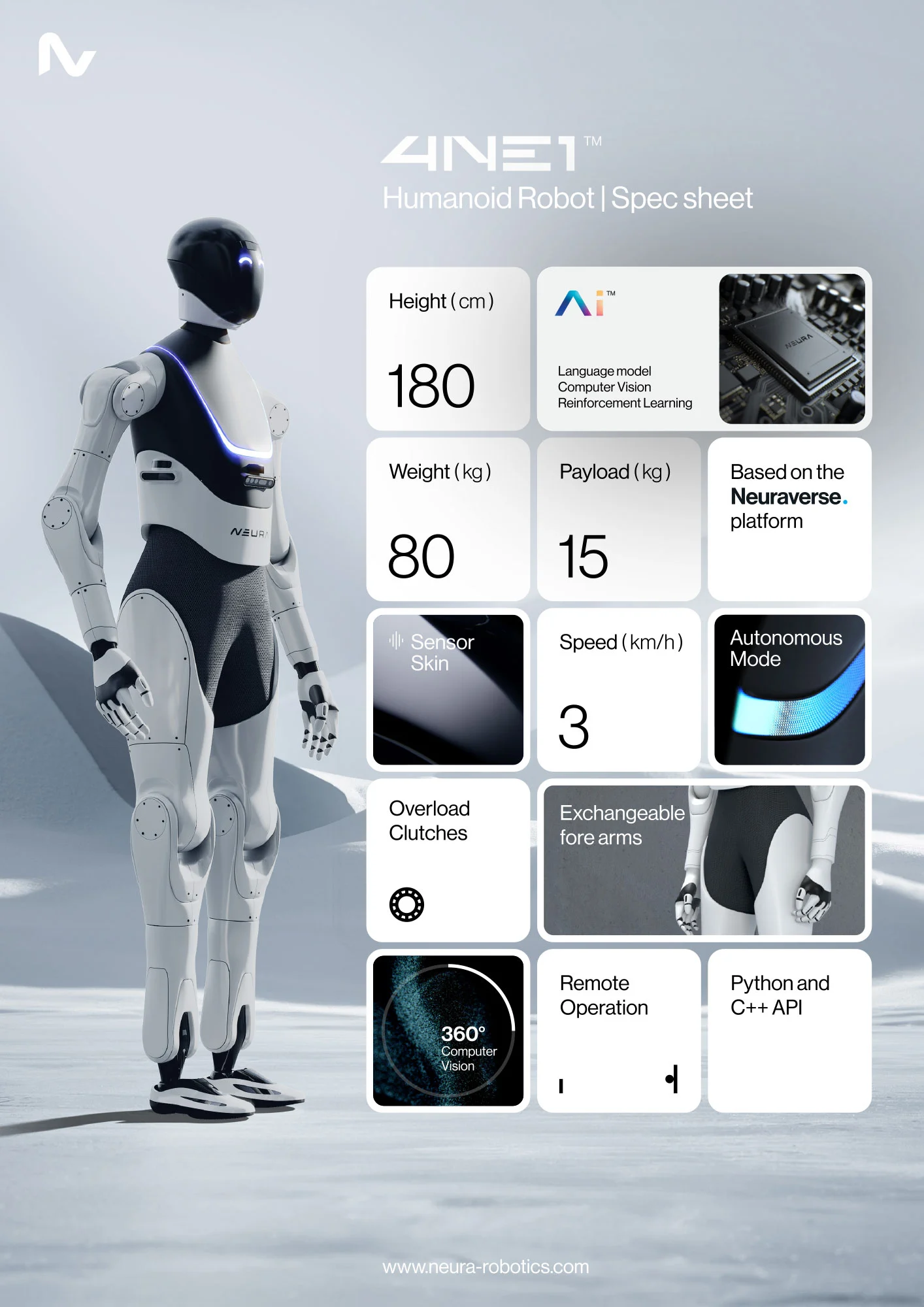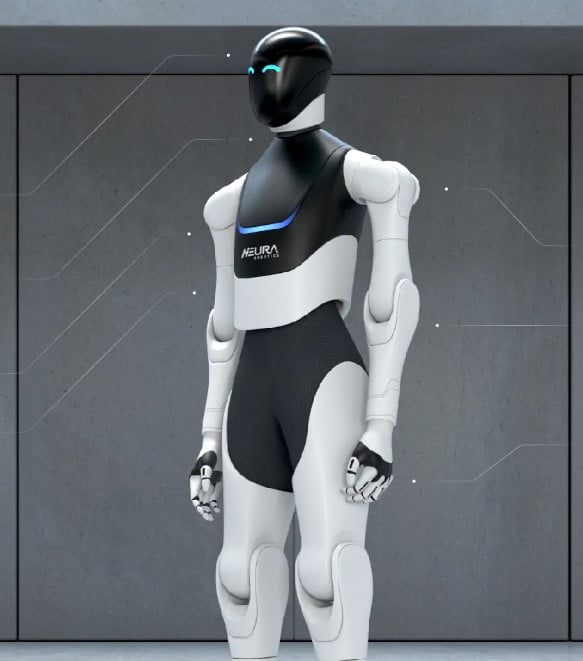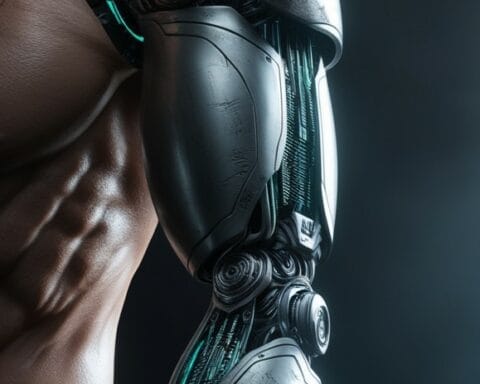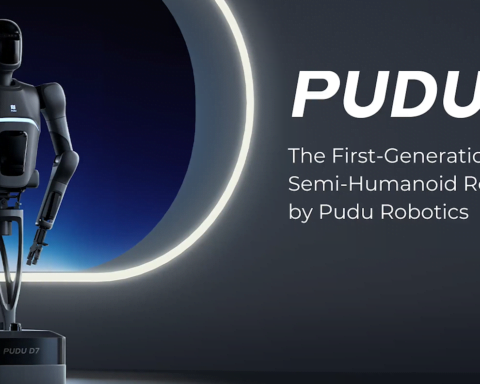Last Updated on September 14, 2024 12:08 pm by Laszlo Szabo / NowadAIs | Published on September 14, 2024 by Laszlo Szabo / NowadAIs
NEURA Robotics 4NE-1 Robot: A Bold Vision for Human-Robot Harmony – Key Notes
- 4NE-1 Robot by NEURA Robotics is a humanoid machine designed for diverse tasks, from industrial work to household chores, pushing the boundaries of AI and human-robot collaboration.
- The robot features advanced AI, sensory abilities, and multi-modal interaction through voice, gesture, and emotion detection, making it adaptable in real-world environments.
- NEURA Robotics plans to deploy 5 million humanoid robots by 2030, highlighting their vision of integrating robots into everyday life and industry to improve efficiency and quality of life.
4NE-1 Humanoid Robot: Introduction
NEURA Robotics’ 4NE-1 humanoid robot changed the field of artificial intelligence and service robotics. By combining AI technology with advanced mechanical engineering, NEURA Robotics has developed a machine that pushes the boundaries of what we thought possible in human-robot collaboration.
The 4NE-1 is more than just a sci-fi futuristic humanoid robot; it has practical applications in various sectors, from industrial automation to household tasks. Now we delve into the technical specifications of the 4NE-1, explores its innovative control and interface systems, and examines real-world case studies of its use. Furthermore, it discusses the potential impact of such advanced robots on the future of human-robot interaction and the broader implications for society and industry.
Technical Specifications of 4NE-1

The 4NE-1, NEURA Robotics’ groundbreaking humanoid robot, boasts impressive physical attributes and advanced capabilities. Standing at approximately 170 cm tall and weighing around 60 kg, this robot can carry a substantial load of 20 kilograms . Its design incorporates both proven and novel hardware, enabling a wide range of movements including walking forward and backward, turning, bending, and navigating various terrains and stairs while maintaining balance .
The robot’s head features an interactive screen for human interaction and status display, which can be customized to suit individual preferences . 4NE-1’s sensory capabilities are equally remarkable, with the ability to see, hear, and possess a sense of touch . It can recognize different human voices, languages, and even detect voice tones and emotions .
Innovative Control and Interface Systems
The 4NE-1 robot showcases advanced control and interface systems that enable seamless human-robot interaction. It interacts with humans through voice and gesture control, allowing for intuitive communication . The robot’s AI capabilities enable it to detect emotions and voices, making it an efficient and adaptable companion . NEURA’s AI API facilitates multi-modal interaction, supporting voice commands in multiple languages and gesture control using hands and fingers . The collaboration between NEURA and Nvidia has been crucial in providing the 4NE-1 with advanced processing and machine learning capabilities. This partnership allows the robot to train in simulated environments and improve its performance over time . Demonstrations of the 4NE-1 robot have shown its great potential, potentially changing the way humans interact with robots in their homes .
Real-World Applications and Case Studies
The 4NE-1 robot showcases versatile applications across various industries. In healthcare, it can assist with patient care and routine tasks. In logistics, the robot excels at material handling and packaging . The education sector benefits from 4NE-1’s capabilities in supporting research and testing artificial limbs under realistic conditions . Its advanced sensory abilities, including sight, hearing, and touch, enable natural interactions in diverse environments . The robot’s cognitive abilities, powered by NVIDIA’s AI and robotics platforms, allow it to perform complex tasks with high efficiency and precision . These real-world applications demonstrate 4NE-1’s potential to transform human-robot collaboration in everyday settings, from homes to industrial environments.
The Future of Human-Robot Collaboration
NEURA Robotics aims to deliver up to 5 million humanoid and cognitive robots worldwide by 2030 . This ambitious goal reflects the company’s vision of ushering in an era of cognitive robots that can see, hear, and have a sense of touch . By integrating cutting-edge AI and advanced sensors, NEURA is pushing the boundaries of human-robot interaction.
The collaboration between NEURA and NVIDIA is set to accelerate the development of next-generation robots. Using NVIDIA’s Isaac platform, including Isaac Lab and Isaac Sim, NEURA can train cognitive and humanoid robots faster in various simulated scenarios . This partnership aims to enhance on-device AI, delivering high-performance robotic assistants for specific applications .
NEURA’s philosophy emphasizes collaboration between humans and AI robots to increase productivity and improve quality of life . As these advanced robots become more prevalent in homes and workplaces, they are poised to transform daily life, taking over tedious tasks and freeing humans to engage in more creative activities
Descriptions
- 4NE-1 Robot: A humanoid robot developed by NEURA Robotics designed to handle tasks in various environments, from healthcare to industrial settings, with the help of advanced AI and machine learning.
- Humanoid Robot: A robot with a human-like appearance and capabilities, able to perform tasks typically done by people, such as walking, handling objects, and interacting with humans.
- Sensory Capabilities: The robot’s ability to see, hear, and feel through AI-powered sensors, enabling it to understand its surroundings and interact naturally with people.
- Voice and Gesture Control: Methods by which humans can command the robot using spoken instructions or hand movements, providing a seamless and intuitive way to interact.
- Emotion Detection: A feature that allows the robot to recognize and interpret human emotions based on voice tones, facial expressions, and gestures.
- Isaac Platform: NVIDIA’s AI and robotics development platform, used to train and simulate robots like the 4NE-1 in virtual environments before they are deployed in the real world.
Frequently Asked Questions
- What is the 4NE-1 Robot?
The 4NE-1 Robot is a humanoid machine developed by NEURA Robotics that uses AI and advanced sensors to perform tasks in industries like healthcare, logistics, and education. It can interact with humans through voice and gestures. - How does the 4NE-1 Robot learn and improve?
4NE-1 is equipped with AI and machine learning capabilities, allowing it to be trained in virtual environments using NVIDIA’s Isaac platform. Over time, it adapts and becomes more efficient in performing complex tasks. - What industries can the 4NE-1 Robot be used in?
The 4NE-1 Robot can be deployed in a variety of sectors, including healthcare for patient assistance, logistics for material handling, and education for research on artificial limbs. - How does the 4NE-1 Robot interact with humans?
The 4NE-1 Robot uses voice and gesture control to communicate with people. It can also detect emotions and adjust its behavior accordingly, making the interaction more natural and responsive. - What is NEURA Robotics’ long-term plan for the 4NE-1 Robot?
NEURA Robotics aims to deliver 5 million humanoid robots like the 4NE-1 by 2030, with the goal of integrating these cognitive robots into everyday life to improve productivity and assist with various tasks.












